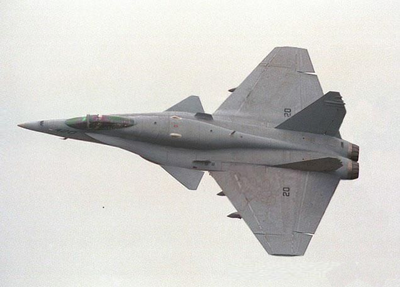K-26
| K-26 | |
|---|---|
 An airborne K-26A | |
| General information | |
| Type | Fighter |
| Status | Active |
| History | |
| Manufactured | 1996-Present |
| Introduction date | 1998 |
Background
Although experiences in the Flynnvakian-Baxtonian War had shown Kalaronian military analysists that the light fighter as a concept was becoming less capable against more heavily armed, faster, and better equipped aircraft; there was relatively little interest in building heavier aircraft from the Central Command. Because Kalaron largely covered the cost of their military industrial complex through international sales, the lack of interest from members of the International Trade Federation in the more expensive and heavier airframes doured the prospects for future programs. Meanwhile, the Union of Socialist
This restriction was harmlessly ignored for years, as the lack of international interest in the concept, as well as then peaceful relations with the USCS, disincentivized the production of a wholly separate Aircraft. However
Development
Design
Operational history
Early service
Anti-bomber operations
Post-war service
Variants
The prototype flown in the 1939 fighter competition was designated Chikai WH 25, with WH indicating wŏnhyŏng (prototype). Six were built. Its armament consisted of four 7.5mm machine guns: two above the nose, and one in each wing. Each gun was fed from a 500-round belt.
Type 40-I
Type 40-II
Type 40-III
Type 40-IV
Type 40-V
Specifications (Type 40-I)
General Characteristics
- Crew:
- Length:
- Wingspan:
- Height:
- Wing Area:
- Empty Weight:
- Loaded Weight:
- Powerplant:
Performance
- Maximum Speed:
- Range:
- Service Ceiling:
- Rate of Climb:
- Wing Loading:
- Power-to-Mass ratio:
Armament
- Guns:
- 2x forward-firing
- 2x forward-firing
- Bombs: